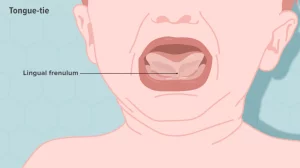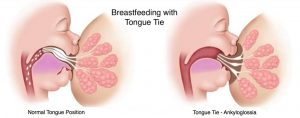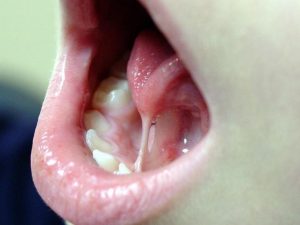
What is Ankyloglossia?
What is Ankyloglossia?
Have you ever noticed that your child isn’t producing his ‘t’s’ and ‘d’s’? It’s because he probably doesn’t know how to produce the sounds, or his tongue cannot come in contact with the upper palate to say these sounds coherently. Your child may have a tongue tie (Ankyloglossia). Suppose you let his paediatrician, dentist or speech-language pathologist take a look at his mouth. In that case, they will be able to properly diagnose and provide treatment options for a tongue tie.
Ankyloglossia is a piece of tissue under the tongue that restricts regular movements. In the third month of pregnancy, this piece of tissue dissolves towards the back of the tongue, allowing up and down and side to side tongue movements. If this dissolving (apoptosis) does not occur, the piece of tissue connected below the tongue remains, causing a tongue tie. This tissue is called the lingual frenulum. It may be short or tight or could be attached way up near the tongue tip. Either way, it ties the tongue to one place. For some children, tongue-tie isn’t a significant issue, but it can severely affect eating and speaking for others.

How does a tongue-tie affect feeding?
A paediatrician can diagnose a tongue tie, but it would be noticed first by a speech language therapist or a lactation specialist who evaluates the child’s breastfeeding issues. The baby uses an open mouth seal because suctioning isn’t possible. In those cases, the baby uses its lips and

gums to hold on to the nipple, causing pain while breastfeeding. Due to the restricted movement of the tongue, latching becomes a problem leading to common issues with weight gain and milk supply. A thorough evaluation of the tongue function and the tension of the tissues during feeding can help the clinician determine if surgical intervention is required.
The severity of the tongue tie matters. In mild cases, the doctors don’t recommend intervention. Otherwise, a frenotomy can be done, which is a procedure to release the lingual frenulum. These surgeries take about a couple of minutes and can be performed in the doctor’s office. The most common side effect is minimal bleeding. After the procedure, the caregivers have to stretch the tissues for at least 3 to 4 weeks to ensure that the tissue does not regrow. These stretches may be a little cumbersome, as babies don’t enjoy them.
Long term effects of untreated tongue ties are:
– Difficulty chewing and swallowing firmer food
– Dental misalignment and narrow facial structure
– Poor dental hygiene. The tongue cannot sweep across the teeth and release saliva for oral cleansing
– Delayed speech development
– Impaired speech due to restricted tongue movements
– Low self-esteem due to speech impairment

In some cases, the other oral structures start compensating for the restricted tongue movements leaving no long term effects. Many mothers are hesitant to request a surgical removal of tissue in their baby’s mouth. However, this surgery will avoid many related developmental issues.
How does a tongue-tie affect speech?
Tongue ties are unlikely to cause speech problems in most cases. Most SLPs rarely recommend a frenotomy unless and until the tongue-tie is causing subsequent feeding issues.
The tongue is critical to producing sounds (phonemes) or words. For example, take the sound “D”. The tongue needs to elevate to touch the upper palate to produce this sound. The sound may be incoherent when the tongue’s movement is restricted due to ankyloglossia. In this manner, there are a lot of sounds that require a good range of motion of the tongue. A few familiar sounds that children struggle with are:
- T
- D
- Z
- S
- R
- L
These sounds require the tongue’s full range of motion. It does not mean that it cannot be produced, the tongue will be able to approximate the position, but the sounds may appear distorted or “slushy”. Some children may produce these sounds accurately by compensating for their oral movements. If you notice that your child has issues with speech, consulting with a speech language pathologist is essential. They are specialists who are trained to evaluate common speech impairments and their causes. They can diagnose whether your child has ankyloglossia or not. Moreover, they will also provide intervention solutions for a smooth healing process.
- Amazon purchases for your child’s speech development - January 31, 2023
- Functional Writing Activities for Individuals with Aphasia - January 23, 2023
- AAC for Adults with Communication Difficulties - January 16, 2023

Leave a Comment
(2 Comments)
Very informative. I had a procedure done for a lip tie( labial frenulum) few years ago. Very simple procedure at a dental clinic. Would like to read more of such articles 🙂
Dear Bharathi,
Thanks for your appreciation!
Please follow us on http://www.instagram.com/1specialplace for regular updates!
Categories
Recent Posts